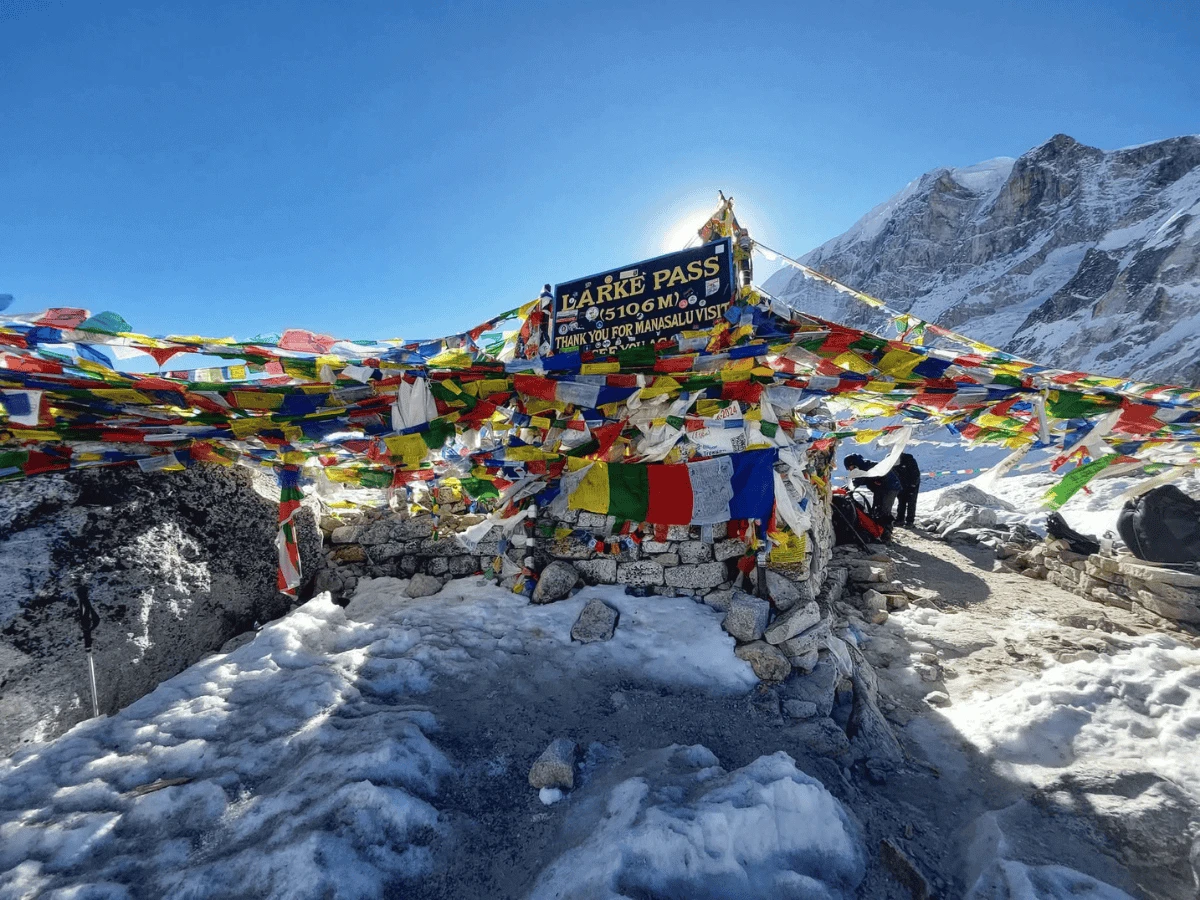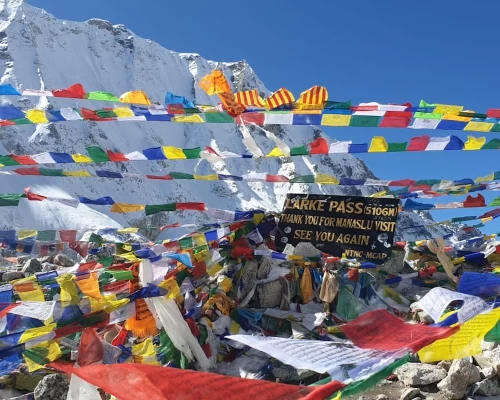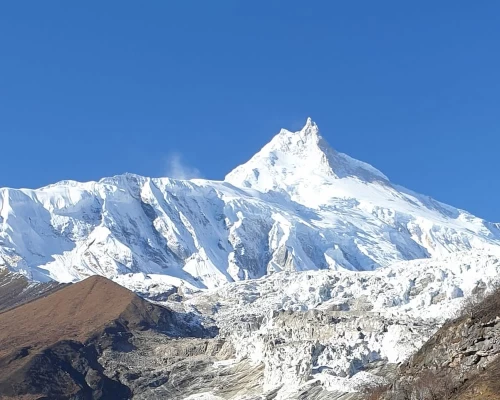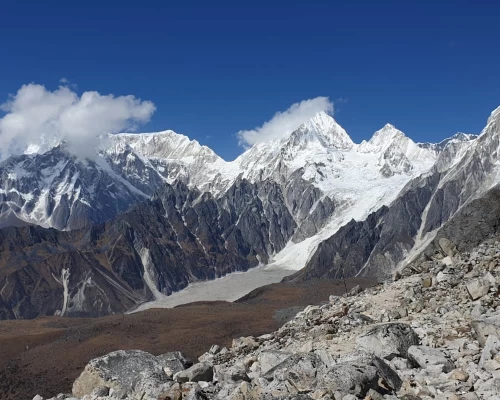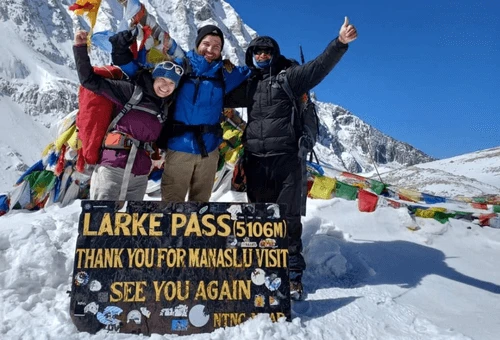Travel Insurance for Manaslu Circuit Trek
Why travel insurance is essential: Traveling in remote Himalayan regions like Manaslu comes with inherent risks – high altitude effects, potential injuries, illness, or unforeseen events (landslides or flight cancellations elsewhere affecting schedules). Travel insurance acts as your safety net. For the Manaslu Circuit Trek, we require all participants to have travel insurance that covers trekking up to 5,500+ meters in elevation, emergency medical treatment, and helicopter evacuation. Medical facilities along the trek are extremely basic or nonexistent – in a serious emergency, the fastest way to get help is via helicopter to Kathmandu. Helicopter rescues can cost tens of thousands of dollars (USD 4,000–$6,000 for a single flight), which you would have to pay upfront without insurance. A good insurance policy ensures you can be evacuated and treated without facing crippling costs.
Eco Tourism on the Manaslu Circuit
At Mountain Eco Trails, we are passionate about eco-tourism and strive to minimize our environmental footprint. The Manaslu region is a pristine area, and it’s our collective responsibility to keep it that way for future generations of trekkers and the local communities who call it home. We follow Leave No Trace principles on the trail. This means we pack out all our non-biodegradable trash (candy wrappers, plastic, etc.) instead of leaving or burning it. Eco-tourism isn’t just about the natural environment; it’s also about respecting the cultural environment. The Manaslu region’s people have their customs and traditions. We brief our groups on cultural dos and don’ts – such as asking permission before photographing people, dressing modestly (especially around monasteries – shoulders and knees covered), and observing local etiquette (like using the right hand or both hands to give/receive, saying “Namaste” or even “Tashi Delek” in Tibetan villages).
What Permits Are Needed for the Manaslu Trek?
Trekking in the Manaslu region requires several permits, due to its status as a restricted area and its location overlapping conservation zones. Don’t worry – Mountain Eco Trails will handle all permit arrangements for you, but it’s good to know what they are and why they’re needed:
Manaslu Restricted Area Permit (RAP)
It is the most important permit, essentially your Manaslu trekking permit. Since the Manaslu
Circuit passes through a restricted zone (from Jagat to Dharapani, close to the Tibetan border), the Nepali government requires a special permit for security and conservation reasons. It costs USD 100 per person for the first 7 days, then $15 per day for each additional day during Sept-Nov. Likewise, during Dec-Aug it costs USD 75 per person for the first 7 days, then $10 per day thereafter.
Manaslu Conservation Area Permit (MCAP)
Mount Manaslu and the surrounding areas are part of the Manaslu Conservation Area, managed by the National Trust for Nature Conservation (NTNC). You need a conservation area entry permit to trek here. The cost is NPR 3,000 per person (approximately USD 25–$30) for foreign nationals. For SAARC country citizens, it’s cheaper (around NPR 200).
Annapurna Conservation Area Permit (ACAP)
Toward the end of the trek, when you descend from Larkya La, you enter the Annapurna Conservation Area (from Dharapani onward is technically in Annapurna Circuit territory). Hence, you also need an ACAP permit, as well as NPR 3,000 ($25) for foreigners.
Trekking Trail Condition of Manaslu Circuit
Trekkers often ask: “What are the trails like on the Manaslu Circuit? Will it be very rough?” The short answer: the trails are rugged but well-established, offering a true adventure without being unmanageably difficult. The starting point of the trek goes through hilly terrain with a mixture of underdeveloped roads and footpaths. You will cross many suspension bridges in the first half of the trek. As you gain altitude, the trail runs through alpine forests and villages. The condition remains generally good – these paths have been used by local people for ages, often with stone paving in villages. Around Namrung and Lho, you’ll walk on pleasant woodland paths, occasionally muddy if snow has recently melted. Pastures near Shyala and Samagaon are relatively flat and easy to walk.
Above Samdo, vegetation is sparse, and you’re on moraines and yak paths. The trail to Dharamsala is a bit rocky but not difficult, just thinner air making it harder. On the approach to Larkya La Pass from Dharmasala, the trail can become indistinct, especially if there’s snow. But there are some cairns (rock piles) and usually a clear route worn by trekkers’ feet. We typically depart early and often are among other groups, so collective effort and our guide’s knowledge ensure we stay on track. Near the pass, the trail is basically up a scree slope, zigzagging and stepping on rocks. It’s important to step where your guide steps to avoid any loose rocks. On the other side of the pass, the trail down starts steep; if snow-covered, we will have microspikes or ask porters to assist clients in spots. There might be some icy patches. As you descend, the trail becomes a defined path again by the time you hit Bimthang. In Bimthang and beyond, you join well-trodden tracks used by yaks and locals trading between Manang and Manaslu, so from there to Dharapani it’s relatively easy hiking on soft forest soil and riverbed flats.
Packing List for Manaslu Circuit Trekking
Having the right gear is vital for a comfortable and successful trek. Below is a comprehensive packing list for the Manaslu Circuit Trek, with explanations to help you decide what to bring. Keep in mind that the weather can range from hot and humid in the lowlands to cold at high altitude. Layering is key. Also, weight matters – porters will carry up to 15 kg per person, and your daypack should be around 5-7 kg. Try to keep your total gear within 15 kg if possible.
Clothing:
- Trekking Boots with an ankle support.
- Quick Dry T-shirts
- Trekking Pants
- Base Layers
- Fleece or Softshell Jacket
- Windproof Down Jacket
- Waterproof Shell (Jacket & Pants)
- Underwear and Sports Bras
- Woolen Socks, Woolen Hat, and Gloves
Trekking Gear
- Trekking Poles and Sleeping Bag
- Head Lamp
- Day Backpack of at least 50 L
- Water Bottle with purification tablet.
Extra Gear
- First Aid Kit and Personal Medication
- Toiletries
- Camera and extra batteries with charger
- Sunglasses and Skin Care Items
- Snacks and Protein Bars
Best Time to Do the Manaslu Circuit Trek
The best time to trek the Manaslu Circuit is during Nepal’s two main trekking seasons: spring and autumn. These seasons offer the most stable weather and the clearest views. However, each time of year has its pros and cons. Let’s break it down:
Autumn (September to November): This is generally considered the prime trekking season in Nepal, and Manaslu is no exception. September, October, and November offer clear skies, fresh air, and incredible mountain vistas. The monsoon rains (June-August) have washed the dust away, and by late September the clouds recede, revealing crystal-clear views of the Himalayas.
Spring (March to May): The second-best season. March starts cold at high altitudes (Larkya Pass still has substantial snow from winter, but it’s passable with care). As the month progresses, temperatures rise and conditions improve. April is a fantastic month: stable weather windows, moderate temperatures, and the rhododendron forests bloom in full color at lower elevations – hillsides are pink, red, and white with flowers, making the trek extra beautiful. Mountain views in spring can be slightly hazy, especially in late April/May due to dust or humidity, but generally mornings are clear.
Manaslu Trek Acclimatization Tips
Proper acclimatization is crucial for high-altitude treks like the Manaslu Circuit. “Acclimatization” means allowing your body time to adjust to the decreasing oxygen levels as you go higher. If done right, you greatly reduce the risk of acute mountain sickness (AMS) and increase your enjoyment. Here are some expert acclimatization tips for the Manaslu trek:
- Follow the major rule of Climbing high and sleeping low.
- Gradual and slow ascent during the day. Do not rush.
- Drink at least 3-4 liters of water a day. Also, focus on eating vegetable soups.
- Always listen to your body. If you start to feel the symptoms, inform your guide and your trekking members.
- Carry Diamox medication for altitude sickness in case of emergencies.
- Clothing gear is always important to keep yourself warm. Layers, Down jacket, windproof, and waterproof clothes should be in your packing list.
- Avoid resting too much at high altitude.
By following these acclimatization tips, you tilt the odds in your favor for a smooth trek over Larkya La. Many trekkers complete the Manaslu Circuit without any significant altitude sickness because they prepared and listened to advice. Respect the mountain and your body – acclimatization is about patience and awareness. We built our program around these principles, so if you stick with it, you’ll stand on the high pass feeling great and savoring the success!
Manaslu Circuit Tea House Trek
The Manaslu Circuit is a tea house trek, meaning you will be staying in local lodges (tea houses) each night rather than camping. This is great news for trekkers who want a bit of comfort and cultural immersion, as well as for reducing the cost and logistical complexity of the trek. Here’s what to expect from the Manaslu Circuit tea house trek experience:
Tea House Accommodation:
Tea houses are essentially small guesthouses run by local families. Along the Manaslu Circuit, tea houses are available at all overnight stops in our itinerary: Machha Khola, Jagat, Deng, Namrung, Lho, Samagaon, Samdo, Dharmasala (though Dharmasala is more like a basic shelter), Bimthang, Tilije, etc. Rooms in tea houses are typically simple twin-share rooms with two single beds (some places might have triple or dorm rooms if it’s busy). The beds have a foam mattress, a pillow, and a blanket. We still recommend using your sleeping bag for warmth and hygiene, especially in higher altitudes.
Meals During the Trek in the Manaslu Region
Staying well-nourished is vital when trekking, and the meals during the Manaslu Circuit Trek are designed to keep you fueled for long hours on the trail. One of the joys of a tea house trek is sampling local cuisine and also having a variety of familiar dishes available. Here’s what you can expect in terms of food and dining on the trek:
Meals Provided: In our Manaslu Circuit package, breakfast, lunch, and dinner are included each day on the trek. Typically, you will have breakfast and dinner at the tea house where you stay overnight, and lunch at a tea house or village along the way at midday. Please note that hot drinks, including a cup of tea and coffee, are provided only during breakfast; other than that, extra drinks will be at your own expense.
Breakfast: Porridge, Bread, Muesli, Chapati, Tibetan Bread, Pan cakes, Eggs, Potato Dishes, Corn Flakes, and Tea/Coffee.
Lunch and Dinner: Nepali Daal Bhat, Spring Roll, Pizza, Burger, Vegetable Soup, Mushroom Soup, Noodles, Macaroni, Plain Rice, Vegetable Curry, Chow Mein, Momo, etc.
Trek with an Experienced Mountain Eco Trails Guide
One of the biggest advantages of booking with Mountain Eco Trails is the quality and expertise of our trekking guides. Trekking to remote areas like Manaslu is not just about walking; it’s about understanding the land, ensuring safety, and enriching your experience with local knowledge. Here’s what it means to trek with an experienced Mountain Eco Trails guide:
Our guides have extensive experience on the Manaslu Circuit and other Nepal treks. Likewise, the guides are trained in wilderness first aid, CPR, and altitude sickness response. They carry a first aid kit for emergencies. As mentioned in the acclimatization section, they monitor guests for signs of altitude sickness daily. If someone doesn’t feel well, they know how to evaluate symptoms and take appropriate action – whether it’s administering medicine (like Diamox or Imodium from the kit), arranging a rest day, or initiating an evacuation in extreme cases. In summary, trekking with Mountain Eco Trails’ guides means trekking with the best: skilled, knowledgeable, caring professionals who are there to ensure your safety and happiness. They’ll make you feel at home in the Himalayas.
Booking Procedure
Ready to turn this dream trek into a reality? We’ve made our booking procedure simple and customer-friendly. You can either book directly from our website through the package page or email us, or for the customized trip, you can directly WhatsApp us at +9779849790153.
We’ll also send our terms & conditions for you to review (covers things like cancellation policy, what’s included, etc. – we keep it straightforward). To confirm the booking, we ask for a deposit payment. Typically, 20% of the total trip cost is required as a booking deposit (exact amount will be specified). This deposit allows us to start arranging permits, reserve guides, and secure any in-country flights or hotels as needed. The remaining balance can be paid upon your arrival in Nepal (some clients prefer to pay in full upfront, which is fine too).
Now that you know the easy steps, the only thing left is to Book Your Manaslu Circuit Trek. Dates for the best seasons often fill up, so secure your adventure now. With our hassle-free booking and comprehensive support, you’ll find planning this trek is almost as enjoyable as doing it. Get in touch today and let’s start organizing your unforgettable journey to Manaslu!

